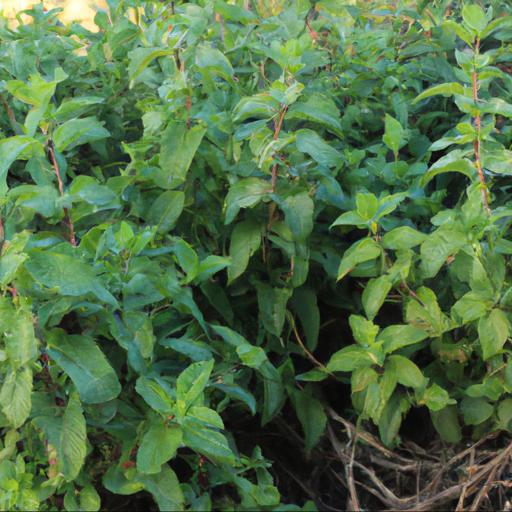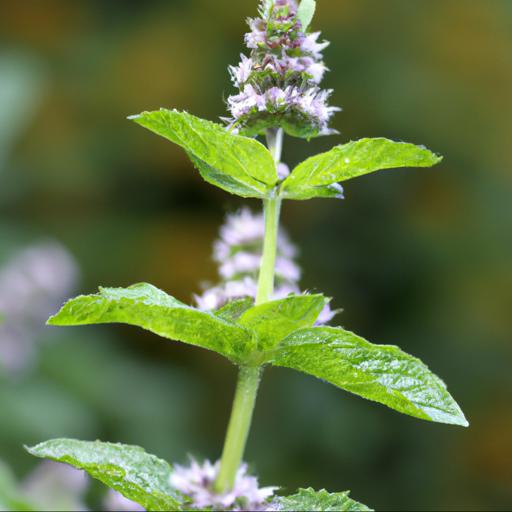Mentha spicata, commonly known as spearmint, is a species of mint native to much of Europe and Asia. It is a perennial herb that is used for culinary and medicinal purposes.
Spearmint has a long history of use in traditional medicine, and its essential oils are known to have antiseptic, antispasmodic, and anti-inflammatory properties. It is also used in aromatherapy and is thought to help with digestion and respiratory issues. In this blog, we’ll explore the many benefits of Mentha spicata and how it can be used to enhance your health and wellbeing.
Health benefits of mentha spicata

Mentha spicata, more commonly known as Spearmint, is a perennial herb that can be found in many gardens. This herb offers a variety of health benefits, making it a great addition to your garden and diet.
Spearmint contains a number of vitamins and minerals including iron, calcium, manganese, and vitamins C and A. Iron is essential for forming red blood cells while calcium helps to strengthen bones and teeth. Manganese helps to convert carbohydrates, proteins, and fats into energy while vitamins C and A act as antioxidants, protecting the body from free radical damage and disease.
In addition to its nutrients, Spearmint also has antimicrobial, anti-inflammatory, and antispasmodic properties. These properties make it useful in treating digestive issues like nausea, vomiting, indigestion, and flatulence. It may also be helpful for treating symptoms of the common cold such as headache and sore throat.
Studies have shown that Spearmint also has the potential to reduce cholesterol and treat asthma, although further research is needed. Spearmint can be used in a variety of dishes, adding flavor and health benefits.
It can be used to make sauces and marinades, used as a garnish on salads, or brewed into a tea. It can also be used to give a tasty twist to foods such as omelets, stews, and soups. Spearmint is truly a multipurpose herb with the potential to improve your overall health and wellness.
Adding this herb to your garden or diet is definitely a must!
Uses of mentha spicata

Mentha spicata, otherwise known as spearmint, is a hardy perennial herb that has many uses in the garden. In the UK, it is usually found growing in shady, moist areas and requires little maintenance.
Spearmint is a popular addition to many gardeners’ herb gardens and can be used in a wide variety of ways. In culinary terms, spearmint can be used fresh or dried as a flavouring or tea. It is often used to flavour cakes and cookies or added as a garnish to salads and vegetable dishes.
Dried leaves can be steeped in boiling water for a fragrant herbal tea. In the UK, spearmint is one of the main ingredients used to make the traditional alcoholic beverage julep. In terms of ornamental use, spearmint is a great choice for adding a splash of colour to garden borders and containers.
It produces white flowers in the summer, which attract bees and butterflies. The leaves of the plant are also a great addition to flower arrangements.
Furthermore, spearmint can also be used to make a fragrant potpourri. Finally, spearmint also has medicinal value.
Research has shown that it can help reduce inflammation and can also be used to help aid digestion. It is not recommended to take large amounts of spearmint internally as it can have a laxative effect when taken in high doses. Instead, it is best to apply topically, either as an essential oil or as a tincture.
In conclusion, spearmint can be a wonderful addition to any UK garden. It has many uses, from adding flavour to food and beverages to helping to reduce inflammation and aid digestion. Additionally, the white flowers will add a touch of beauty and colour to borders and the leaves can be used to make interesting potpourri or decorate flower arrangements.
Growing and harvesting mentha spicata

Mentha spicata, more commonly known as garden mint, is an aromatic herb with a wide array of uses. Growing and harvesting mentha spicata is an easy task for any UK gardener. It has a small, upright habit and can spread rapidly, so planting it in a pot or a contained area is greatly recommended.
Mentha spicata loves full sunlight and well-drained, moist soil. Once planted it tolerates droughts and has a generally low requirement for maintenance; the biggest culprits being mold and mildew, so regular pruning and monitoring is advisable.
For harvesting, it is best to snip the stems lightly, as planting too deeply will impair the plant’s ability to regrow after harvesting. A great benefit to harvesting mentha spicata is that you can use it in many recipes, such as mint jelly, herbal teas, ice creams and even cocktails. If you are looking for an herb that is easy to grow and store, offers a wide range of uses and is beneficial to the environment, look no further than Mentha spicata.
Recipes using mentha spicata
As a UK garden expert, I have to say that Mentha spicata is a great plant to have in your garden. Not only is it a pleasing sight with its bright green foliage and vibrant flowers, but it also has a strong minty aroma that can take your garden to a whole new level. There are many recipes one can make with Mentha spicata.
Its strong minty flavour enhanes the taste of your dish and adds a unique twist to it. It can be brewed as tea, boiled, fried, sautéed, or even infused in an olive oil.
For recipes that require a short cooking time, you can simply chop up the leaves and add them to your dish, which will provide a delicious depth of flavour. If you’re looking for something special, making a Mentha spicata sauce or marinade is a great way to add flavour to your main course.
Simply combine Mentha spicata leaves, garlic, olive oil, and your choice of herbs and spices to create a creamy and tangy sauce that’s perfect for drizzling over chicken, fish, or vegetables. It’s also incredibly versatile, so you can adjust the seasoning to accommodate whatever you’re cooking. Mentha spicata is a versatile and fruitful plant to have growing in your garden, and the possibilities that it provides in the kitchen are endless.
Recipes that you can make with it range from simple sides to gourmet main courses. So why not give it a try and bring some of that fresh minty flavour to your dishes?
Conclusion
Mentha spicata, also known as spearmint, is a popular herb with many uses. It has a strong, minty flavor and aroma that can be used to flavor food and drinks, as well as for medicinal purposes. Spearmint has a wide range of health benefits, including improved digestion, relief from nausea, and the ability to reduce inflammation.
It can also be used topically to treat skin conditions and to reduce fever. Spearmint is easy to grow and can be found in many gardens.
FAQ
What are the health benefits of Mentha spicata?
Mentha spicata, or spearmint, has many health benefits. It can help relieve digestive issues, reduce inflammation, improve oral health, and act as an expectorant. It can also help with respiratory issues, headaches, and nausea. Additionally, spearmint can help reduce stress and anxiety, improve skin health, and boost the immune system.
What are the uses of Mentha spicata in traditional medicine?
Mentha spicata has been used in traditional medicine for a variety of purposes, including treating digestive issues, respiratory problems, headaches, and skin irritations. It has also been used to reduce fever, improve appetite, and reduce inflammation.
What are the chemical constituents of Mentha spicata?
The chemical constituents of Mentha spicata include menthol, menthone, limonene, cineole, pulegone, and carvone.
How is Mentha spicata used in aromatherapy?
Mentha spicata, or spearmint, is commonly used in aromatherapy to help reduce stress, anxiety, and depression. It is also used to help improve mental clarity and focus, and to promote relaxation.
What are the culinary uses of Mentha spicata?
Mentha spicata, commonly known as spearmint, is widely used in culinary dishes. It is commonly used to flavor sauces, salads, jellies, jams, and desserts. It is also used to make teas and herbal infusions. Spearmint is also used to flavor alcoholic beverages such as mojitos and juleps.
How can Mentha spicata be grown in the home garden?
Mentha spicata can be grown in the home garden by planting it in moist, well-drained soil in a sunny or partially shaded spot. The plant should be spaced 12-18 inches apart and watered regularly. It can also be propagated by dividing the root clumps or by taking stem cuttings.

